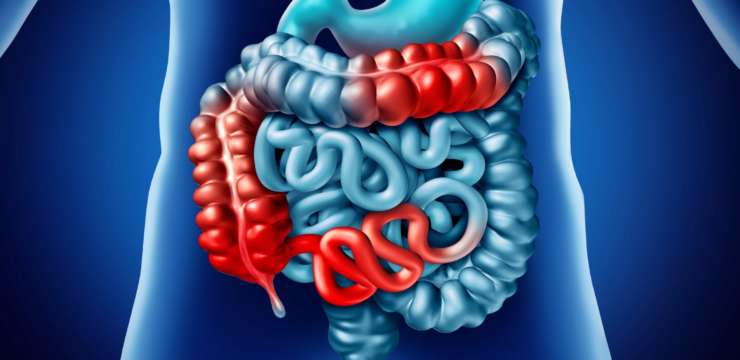Disc bulge and disc herniation are some of the most common conditions that can affect the spine of both young and middle-aged patients. It is…

Nutrition and Wellness go hand in hand. Food provides people with the necessary energy and nutrients to be healthy and for their bodies to perform optimally. By eating a variety of colorful foods, including good quality vegetables, fruits, whole-grain products and lean meats, the body can replenish itself with the essential macronutrient (proteins, carbohydrates, fats) and micronutrients (vitamins and minerals) to function effectively. Healthy eating does not have to be hard. The key is to eat a variety of foods, which include vegetables, fruits, and whole-grains. Eat lean meats, poultry, fish, beans, and low-fat dairy products and drink about half your body weight in ounces of water. Limit salt, sugar, alcohol, saturated fat, and trans fat. Saturated fats usually come from animals. Look for trans fat on the labels of processed foods, margarines, and shortenings. Dr. Alex Jimenez and his health coach offer nutritional examples as well as describe the importance of a balanced nutrition throughout this series of articles, emphasizing how a proper diet combined with physical activity can help individuals reach and maintain a healthy weight, reduce their risk of developing chronic diseases like heart disease, and ultimately promote overall health and wellness.

Disc bulge and disc herniation are some of the most common conditions that can affect the spine of both young and middle-aged patients. It is…


What is gluten? Gluten is the protein found in wheat, barley, and rye. Unfortunately, gluten is the stable of the American diet and hidden in many foods, like soy sauce for example. 99% of people who have a problem with eating gluten do not even know it. They associate their poor health and discomfort with other instances. However, this is becoming an epidemic as those who have a gluten intolerance or sensitivity (diagnosed or undiagnosed) have a significantly higher chance of developing heart disease. So far, there have been 55 diseases that are linked to eating gluten.


The detoxification process has two separate phases, both equally important. In phase one, our body requires “activator†enzymes. These enzymes hold the responsibility of activating a substance that needs to be removed. Once this process is complete, we move on to phase two detoxification. During phase two, we use “excretor†enzymes. These enzymes catalyze reactions that lead to the excretion of the toxins from the body. The way this process works is by binding the “active†toxins from phase one with glutathione in order to make the compounds water-soluble. Water-soluble compounds have the ability to be excreted through sweat or urine. With specific gene variants or deletions within this process, individuals have an increased risk for inflammation, cancers, and other health conditions.


Crohn’s disease is an inflammatory bowel disease (IBD). IBDs are health issues that affect the digestive tract by causing inflammation that lasts longer than an…


DNA methylation is a very important factor in our biochemical pathways. Methylation uses a process of donating methyl groups to a substrate. These methyl group substrates contain DNA and RNA, chemicals, neurotransmitters, hormones, and immune cells. A few examples of methylation include: regulating gene expression, biotransformation, myelination which is the production of the protective coating that surrounds our nerves), building neurotransmitters, immune cells, processing hormones, and DNA/RNA synthesis.


Osteoporosis is a disease process based on stem cell and immunological dysfunction and it is where this dysfunction collides with energy regulatory mechanisms leading to weak and brittle bones. The skeleton is a large block of calcium that the body taps into to survive. This leaves the skeleton depleted of essential nutrients if not properly maintained. One thing that is important is to work on skeletal health from a metabolic level.


We all have specific genes that either increase or decrease our risk of developing cardiovascular disease. These genes can have SNPs, and each has the ability to influence lipid metabolism. These influences can be modulated by the gene’s metabolism. There is heavy evidence that suggests environmental factors will influence most premature cardiovascular cases if action is taken in favor of an individual’s genetic predisposition.
We use DNA Health by DNA Life to test our patients for their genetic variations and to create a personalized healthcare plan for them to better lower their risk of developing diseases.


Our brain is constantly working to help us make decisions, speak, read, and perform many other important functions. It’s also responsible for several involuntary processes,…


Join us for a LIVE podcast with Lizette Ortiz to discuss nutrition tips during this time, suggested exercise types, the importance of warm-ups, and how…


One of the most important nutrients in the body is Co-Enzyme Q10 (CoQ10). CoQ10 is involved in the electron transport chain as well as playing a role in endothelial function. As of late, the medical literature has shown that statin medications like Lipitor, Crestor, and Zecor shut down the production of CoQ10. CoQ10 is needed for many biochemical reactions throughout the body. However, one of the most important factors to realize is that when CoQ10 is depleted in the body we have adverse reactions like the LDL cholesterol becoming oxidized. This event unleashes further destruction to the body and results in the LDL cholesterol drilling holes in the arterial wall, causing extreme inflammation. Inflammation is directly linked to chronic health conditions as well as an increased risk of heart attacks and stroke.


Folate is a B vitamin naturally found in a variety of foods. The body can’t produce folate, that’s why it’s important to get it from…


Taste perception impacts the food choices we make, our nutrition, and our overall health. Genetically speaking, the taste response we have represents a phenotype. The five taste qualities we have include sweet, bitter, salty, umami, and sour. Genetics shows that humans who are more susceptible to the liking of sugar and fat are influenced by a specific genotype. Similar to this, individuals who have the ability to detect bitterness and rotting food have another genotype. Understanding the genotype people possess is highly important and can be used to create tailored programs for individuals.


Fructose is one of the main components of added sugar. It is a simple type of sugar that makes up about 50 percent of table…


There are currently 54 million adults who suffer from Arthritis. Additionally, about 9% of adults have some type of arthritis-attributed activity limitation. The CDC predicts the number of those diagnosed with arthritis will only continue to rise in the years coming. Arthritis means inflammation of the joints. With Arthro meaning joint and itis referring to inflammation, it is clear that joint inflammation is the symptom being referred to. Many conventional approaches to arthritis treatment are aimed at reducing the inflammation of the joints. These medications also come with a heavy dose of side effects including kidney failure, gastritis, and bleeding in the stomach. Looking from a functional perspective, we pinpoint what is causing the inflammation in the first place. By resolving the overall inflammation in the body and creating a holistic plan to treat and reduce what is causing the inflammation, the joint inflammation ultimately subsides.


Folate, and its synthetic form folic acid, is a water-soluble B vitamin that plays a fundamental role in a variety of functions in the human…


Our diet can significantly affect inflammation in our bodies. Several foods can increase inflammation while other foods can reduce inflammation. According to healthcare professionals, a…


Salt is in nearly every food consumed, but some may have a genetic variation causing them to have salt sensitivities. Salt sensitivity is estimated to be present in 51% of the hypertensive (high blood pressure) population. The ACE and AGT genes are both apart of the Renin-Angiotensin System (RAS). The ACE gene codes for the angiotensin-converting enzyme and is part of the RAS. This system controls the blood pressure by regulating the specific volume of fluids in the body.